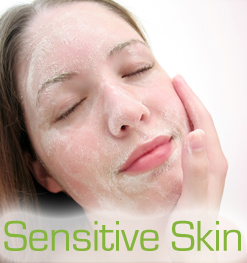Chakra healing is becoming a popular kind of alternative therapy in today’s world. People (even doctors and scientists) believe that there are about seven major Chakras and 21 minor Chakras in the body. This Chakra concept is rooted in Hinduism and dates back to 1000 B.C.. It is something akin to the Chinese healing of ‘Qi’ and the Ayurvedic energy called ‘Prana’. Chakra in Sanskrit is known as “wheel” and the Chakras in our body are nothing by energy centers that connect our physical and spiritual selves. Though they are not visible to the naked eye, the existence of Chakras is proven by the success of Chakra healing.
Chakras and Healing: Why should energy centers heal the body? There is reason. Chakras are not just energy centers, they connect us to our deeper selves like emotions, feelings, thoughts and spiritual body too. There are about seven primary Chakras in the body and each Chakra represents a set of feelings, controls organs and monitors what happens in your body. The Chakra wheel is said to spin clockwise and each Chakra is said to spin at different paces. When there is an imbalance in a particular Chakra, the body part associated with that Chakra is out of tune and this results in ill physical or emotional health.

The 7 Chakras of the body are Root Chakra, Sacral Chakra, Solar Plexus Chakra, Heart Chakra, Throat Chakra, Third Eye Chakra and Sacred Chakra. While the Root Chakra represents our core needs for survival, security and sexual needs, the Sacral Chakra is the seat of creativity. This also controls sexual desires. The Solar Plexus represents our identity and self-worth. The Heart Chakras is the seat of love and impacts our ability to give and receive. If you are lonely or feel that no one loves you, then, maybe there is some blockage in your Heart Chakra. For anything regarding positive communication, the Throat Chakra should be clear, without any energy blockage. The Third Eye or Brow Chakra is the basis of common sense, wisdom, intelligence, dreams, spirituality and intuition. Memory retention is also associated with this Chakra. The Crown Chakra, the crown of all Chakras is located near the brain and influences our physical and mental atmosphere.
Aromatherapy and Chakras: Essential oils can help cure blockage or congestion in Chakras. Some of the oils that guide in balancing Chakras vary according to different Chakras.
1. Root Chakra oils: Located near the tail bone, the Root Chakra is all about understanding our deeper selves. Angelic Root, Myrrh, Frankincense, Spikenard, Vetiver, Benzoin and others. When applied directly, it influences your sense of security and enhances signs of positive productivity.
2. Sacral Chakra oils: Sacral Chakra is also the seat of sexual desire. Oils you can use for the Chakras are – Bergamot, Cardamom, Neroli, Clary Sage, Sandalwood, Ylang Ylang, Rose and others. Sexual problems, emotional dependency and infidelity – all occur due to imbalance in the Sacral Chakra.
3. Solar Plexus Chakra oils: Located above the naval, this Chakra can be healed by Black Pepper, Clove, Cinnamon, Mandarin, Coriander, Cypress, Ginger, Grapefruit, Peppermint, Sandalwood, Spearmint, Vetiver, Ylang Ylang and Geranium.
4. Heart Chakra oils: Seat of love, this Chakra needs to be pampered with Bergamot, Cypress, Lemon, Lavender, Jasmine, Rose, Orange, Sandalwood, Tangerine, Melissa, Neroli and others to function in balance.
5. Throat Chakra oils: Basil, Bergamot, Chamomile, Cypress, Spearmint and Peppermint are oils for this Chakra. The oils can improve communication skills and make you a patient listener.
6. Third Eye Chakra oils: Angelica Root, Bay Laurel, Frankincense, Patchouli, Rosemary, Sandalwood, Vetiver and Clary Sage are some of the oils used for Third Eye Chakra.
7. Crown Chakra oils: Crown Chakra, the crown of your whole self, can be balanced with Cedarwood, Elemi, Frankincense, Jasmine, Lavender, Myrrh, Neroli, Sandalwood, Spikenard, Vetiver and Rose.
Application of oils: Mix your essential oils with carrier oils and apply directly on the Chakra region. For the Root Chakra, you can apply the blend either to your feet or on your lower back. Do not apply on genitals or mucous membranes or cuts/wounds. Application of oils, along with positive orientation or Chakra music can help heal and balance your Chakras in a very effective way.









